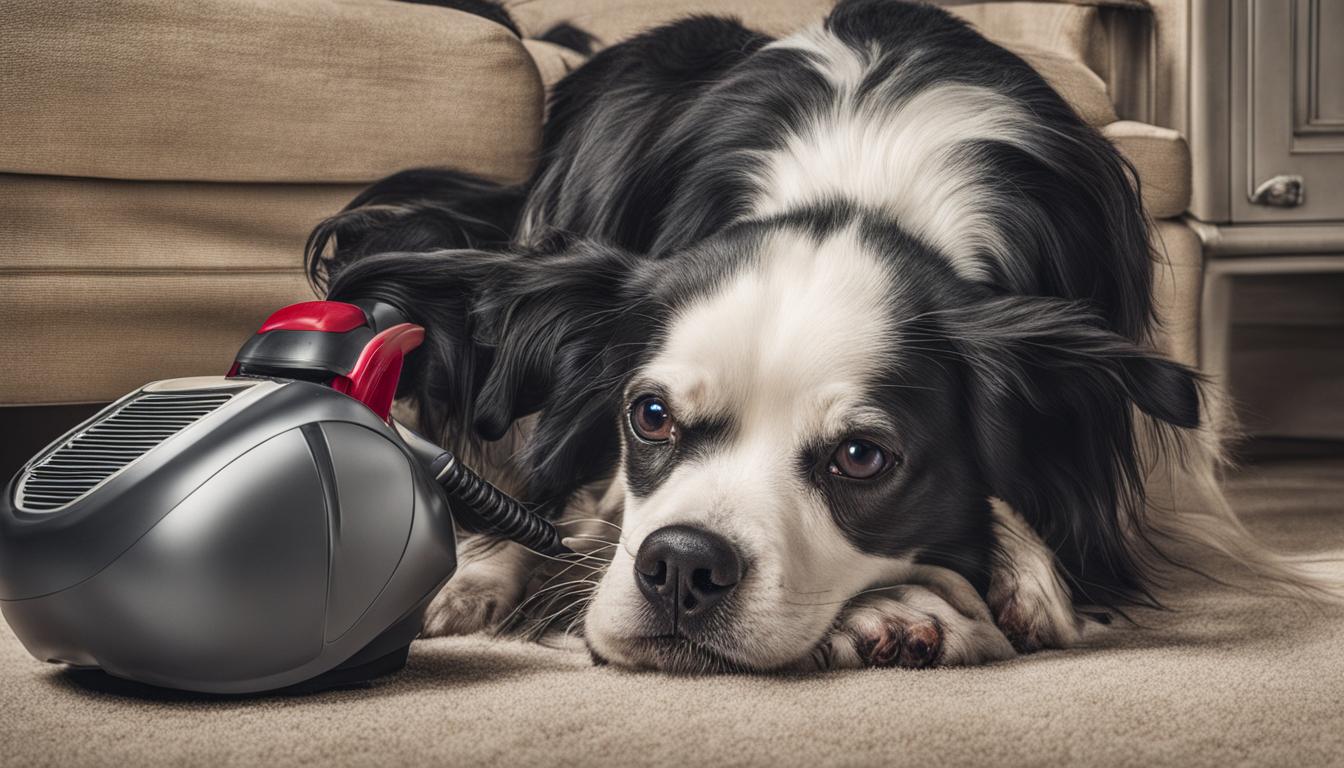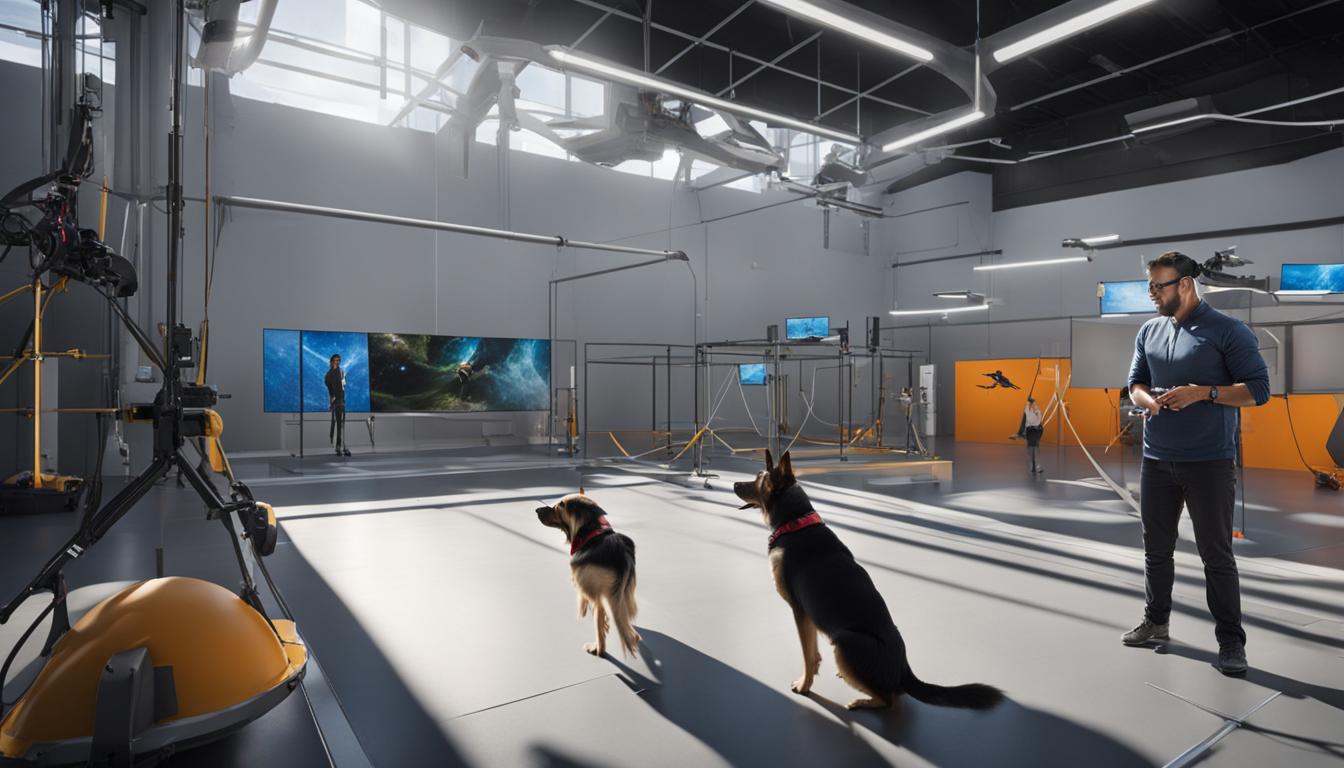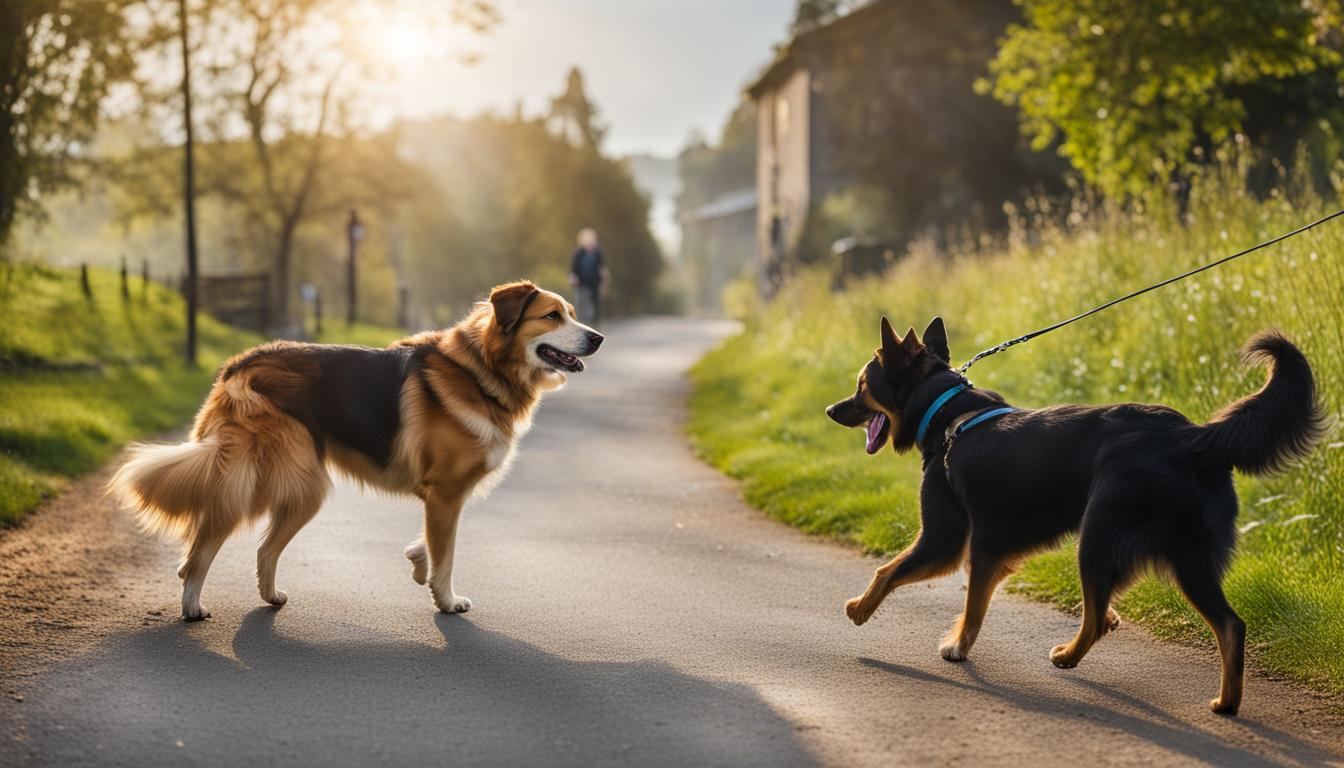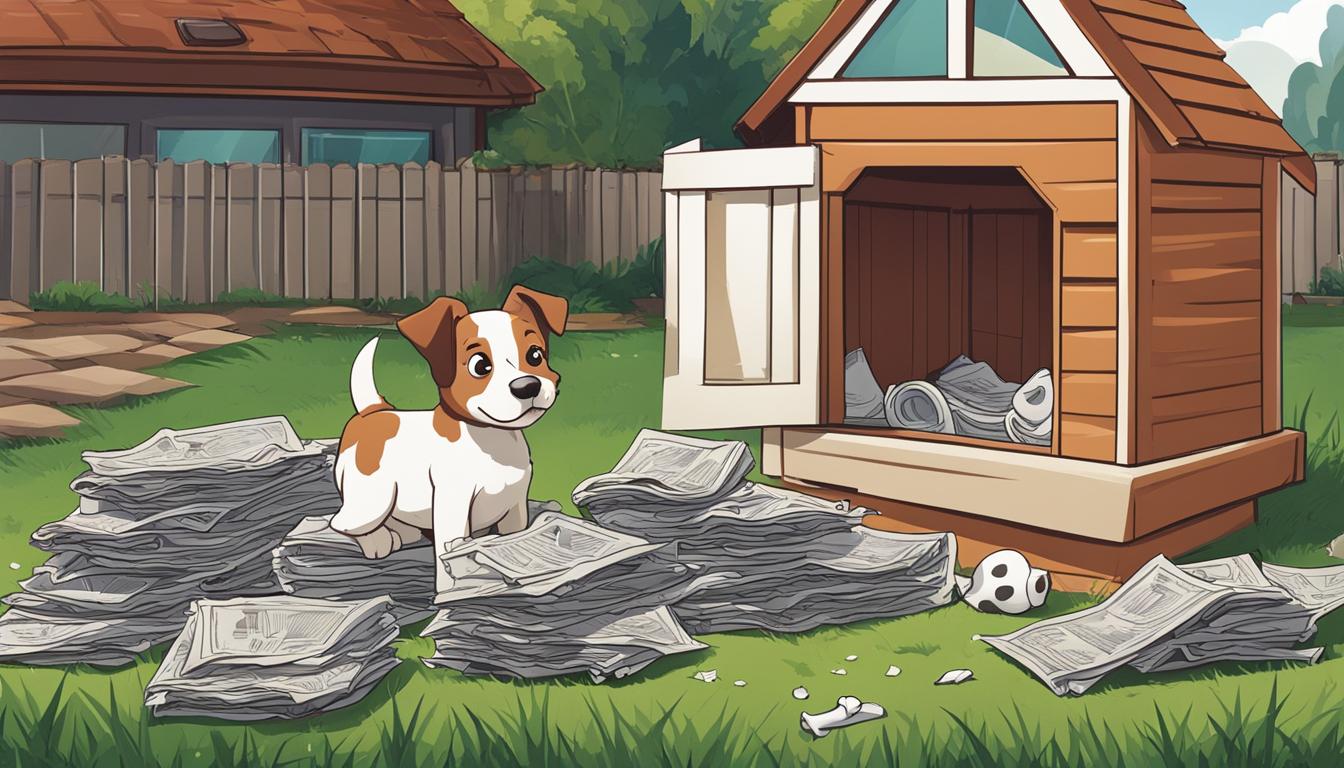Welcome to our guide on understanding dog anxiety and fear! As a pet owner, it’s essential to recognize the signs and provide the right support for your furry friend. Fear and phobias are common in dogs, but with a little insight into the science behind them, you can help your dog build confidence and overcome their fears.
Studies have shown that fear is a natural and adaptive response in dogs. However, in some cases, it can escalate into phobias, causing extreme reactions and distress. Genetics, past experiences, and even human influence can all play a role in the development of fear and phobias in dogs.
The good news is that there are interventions and training techniques available to help dogs conquer their fears. By understanding the science behind fear and phobias, recognizing the signs and behaviors, and implementing effective training strategies, you can provide the support your dog needs to live a happier and more confident life.
Key Takeaways:
- Understanding the difference between fear and phobia is crucial in determining the appropriate interventions for your dog.
- Fear and phobias in dogs have a neurobiological basis, and certain breeds may be more prone to them due to genetics.
- Dogs with fear and anxiety may exhibit various signs and behaviors, such as shaking, pacing, and destructive behavior.
- Intervention and training strategies, such as desensitization and behavior modification, can help fearful dogs build confidence.
- Building trust and confidence is essential for fearful dogs, and creating a safe and predictable environment can greatly assist in their recovery.
The Difference Between Fear and Phobia in Dogs
Fear and phobia are related but distinct concepts when it comes to dogs. Understanding the difference between the two is crucial in determining the appropriate interventions to help our furry friends overcome their anxieties and fears.
Fear is a natural response to a perceived threat. It is a normal, adaptive reaction that can help dogs stay safe in potentially dangerous situations. When experiencing fear, dogs may exhibit various signs, such as shaking, pacing, whining, and hiding.
A phobia, on the other hand, is an intense and persistent fear that goes beyond a rational response. It is often triggered by a specific stimulus, such as thunderstorms or fireworks. Dogs with phobias may have extreme reactions, such as panicking, trying to escape, or even showing aggression.
Fear vs Phobia: A Quick Comparison
| Fear | Phobia |
|---|---|
| Fear is a natural response to perceived threat | Phobia is an intense and persistent fear |
| Normal and adaptive | Excessive and irrational |
| Various signs: shaking, pacing, whining | Extreme reactions: panicking, escaping, aggression |
“Fear is a natural response to perceived threat, while phobia is an intense and persistent fear that goes beyond a rational response.”
Recognizing the difference between fear and phobia is essential in determining the most appropriate interventions and training techniques to help our canine companions overcome their anxieties and build confidence.
In the next section, we will delve deeper into the science behind fear and phobias in dogs, exploring the neurobiological basis and the factors that contribute to their development. Stay tuned!
The Science behind Fear and Phobia in Dogs
Understanding the science behind fear and phobias in dogs is crucial in developing effective interventions to help them overcome their fears. Research has shown that fear and phobias in dogs have a neurobiological basis, with the autonomic nervous system playing a significant role in the body’s response to perceived threats. Certain breeds may be more prone to fear and phobias due to their genetics, highlighting the importance of considering individual differences when addressing these issues.
In addition to genetics, past experiences also contribute to the development of fear and phobias in dogs. Even one traumatic event can solidify a fearful response into a phobia, making it essential to address underlying triggers and associations. By recognizing the underlying science behind fear and phobias, pet owners can gain insights into their dogs’ behaviors and develop targeted interventions.
The Role of Genetics
Different breeds have varying temperaments and predispositions, which can influence their tendency to exhibit fear and phobias. For example, some breeds may have a higher likelihood of developing noise phobias, such as fear of thunderstorms or fireworks. Understanding these breed-specific tendencies can help pet owners anticipate potential triggers and implement appropriate training and management strategies.
| Breed | Fear/Phobia Tendency |
|---|---|
| Labrador Retriever | Low |
| Border Collie | Medium |
| German Shepherd | High |
The Impact of Past Experiences
Past experiences play a significant role in shaping a dog’s fears and phobias. Negative encounters or traumatic events can leave a lasting impact, creating associations between specific stimuli and fear responses. It is essential for pet owners to consider their dogs’ past experiences and work towards creating positive associations with formerly fear-inducing stimuli. Through gradual desensitization and counter-conditioning techniques, dogs can learn to overcome their fears and build confidence.
“Understanding the underlying science behind fear and phobias in dogs allows us to develop targeted interventions and provide the support our furry friends need to overcome their fears.”
Signs and Behaviors of Fear and Anxiety in Dogs
When it comes to understanding and supporting dogs with fear and anxiety, recognizing the signs and behaviors they exhibit is crucial. Dogs can’t speak, so they communicate their distress through their actions. By being attentive to these signs, you can identify when your furry friend is experiencing fear or anxiety and take appropriate measures to help them.
Some common signs of fear and anxiety in dogs include shaking, pacing, vocalizing, destructive behavior, excessive panting, and elimination, which can manifest as urination or bowel movements. Additionally, separation anxiety is a prevalent form of anxiety in dogs, characterized by distress behaviors when left alone.
It’s essential to remember that every dog is unique, and their specific behaviors may vary. Some dogs may show more subtle signs of anxiety, such as lip licking, yawning, or cowering, while others may exhibit more prominent signs.
Table: Signs and Behaviors of Fear and Anxiety in Dogs
| Signs | Behaviors |
|---|---|
| Shaking | Trembling or shivering, especially in stressful situations |
| Pacing | Restlessly moving back and forth |
| Vocalizing | Barking, whining, whimpering, or growling excessively |
| Destructive Behavior | Chewing on furniture, digging, or scratching doors and walls |
| Excessive Panting | Abnormally heavy or rapid breathing |
| Elimination | Urinating or defecating indoors, even when house-trained |
If you notice any of these signs or behaviors in your dog, it’s essential to provide them with the support they need. Recognizing their fear and anxiety can guide you in implementing appropriate interventions and training strategies to help them feel safe and secure.
Intervention and Training Strategies for Fearful Dogs
When it comes to helping fearful dogs overcome their fears and build confidence, there are various intervention and training strategies that can be effective. Here are some key techniques to consider:
Desensitization Techniques
Desensitization involves gradually exposing a dog to their triggers in a controlled and positive way. This process helps them become less sensitive and fearful over time. For example, if a dog is afraid of loud noises, start by playing recordings of the sounds at a low volume and gradually increase the volume as the dog becomes more comfortable. Reward the dog with treats and praise for calm behavior during the desensitization process.
Behavior Modification
Behavior modification programs, such as systematic desensitization and positive reinforcement, can help dogs change their fear-related behaviors. This involves identifying the triggers that cause fear and then working with the dog to establish positive associations with those triggers. For example, if a dog is fearful of strangers, gradually introduce them to new people in a controlled environment and reward calm and friendly behavior with treats and praise.
Managing Specific Phobias
Specific phobias, like thunderstorm phobia or fear biting, may require targeted interventions and management strategies. For thunderstorm phobia, creating a calm and safe environment during storms and providing distractions, such as toys or treats, can help alleviate the dog’s anxiety. Fear biting can be addressed through behavior modification techniques that focus on teaching the dog alternative behaviors and building their confidence.

Remember, every fearful dog is unique, and it’s important to work with a professional trainer or behaviorist to develop a personalized training plan. With patience, consistency, and the right interventions, fearful dogs can overcome their fears and live happier, more confident lives.
Building Trust and Confidence in Fearful Dogs
If you have a fearful dog, building trust and confidence is essential for their well-being and overall happiness. Dogs that lack confidence often exhibit anxious and fearful behaviors, making it challenging for them to navigate the world around them. However, with patience, consistency, and positive reinforcement, you can help your furry friend develop trust and confidence in themselves and their surroundings.
To start building trust with your fearful dog, it’s crucial to create a safe and predictable environment. Establishing a routine can provide your dog with a sense of stability and security. Dogs thrive on consistency, so try to feed them, walk them, and play with them at the same times each day. This routine will help your dog feel more at ease and build trust in their environment.
“Building trust with your fearful dog is a delicate process that requires patience and understanding. Be kind and gentle, and remember that trust takes time to develop.”
In addition to routine, you can also create positive associations with previously fear-inducing stimuli. For example, if your dog is afraid of loud noises, you can create a safe space for them during thunderstorms or fireworks by providing comforting items like blankets or toys. You can also use positive reinforcement by giving treats and praise when your dog remains calm during these situations. By associating positive experiences with previously fearful stimuli, you can help your dog feel more secure and confident.
Building trust with your fearful dog is a delicate process that requires patience and understanding. Be kind and gentle, and remember that trust takes time to develop. With consistent, positive interactions, you can help your dog overcome their fears and build confidence to navigate the world with ease.
Table: Tips for Building Trust and Confidence in Fearful Dogs
| Tip | Description |
|---|---|
| Establish a Routine | Create a predictable schedule for feeding, walking, and playtime to provide stability and security for your dog. |
| Create Positive Associations | Associate previously fear-inducing stimuli with positive experiences, such as providing comfort during loud noises or rewarding calm behavior. |
| Use Positive Reinforcement | Reward your dog with treats and praise when they display confident and calm behavior, reinforcing their trust in themselves and their environment. |
| Be Patient and Gentle | Building trust takes time, so be patient with your fearful dog and avoid forcing them into situations that may overwhelm them. |
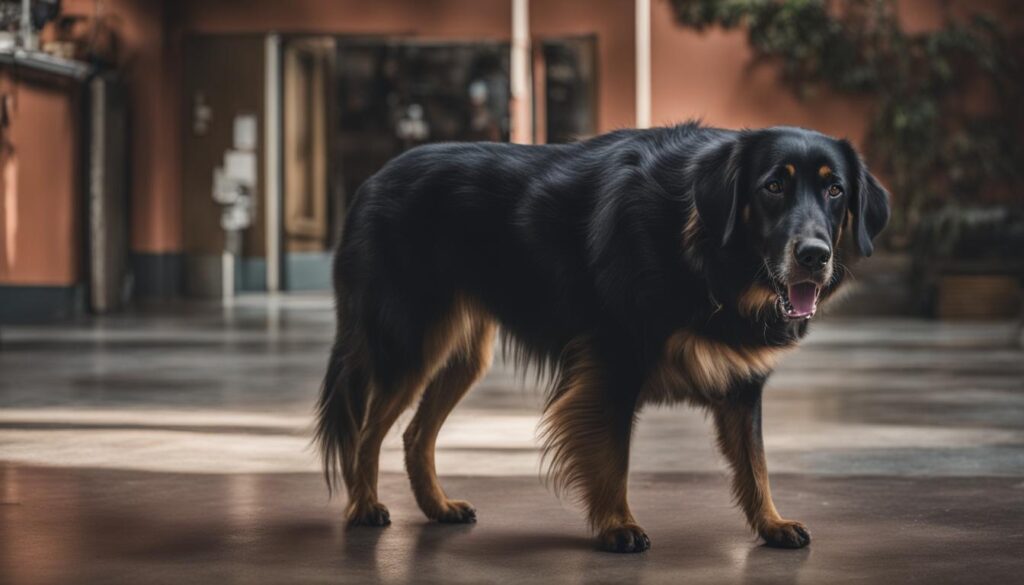
Positive reinforcement plays a crucial role in the process of overcoming specific phobias in dogs. By associating the phobia trigger with positive experiences, such as treats, toys, or praise, dogs can gradually learn to perceive the trigger in a more positive light. This can help shift their emotional response from fear to a more relaxed state. It is important to note that overcoming specific phobias in dogs requires a tailored approach, as each dog may have unique triggers and responses. Working closely with a professional trainer or behaviorist can help create a personalized training plan to address the specific phobia and provide the necessary support and guidance for the dog and their owner.
Conclusion
Congratulations, you have reached the end of our exploration into the science of fear and phobias in dogs. Understanding the complex nature of these issues is the first step in helping your furry friend overcome their fears and anxieties.
By recognizing the signs and behaviors associated with fear and anxiety, you can provide the necessary support and intervention when your dog needs it most. From shaking and pacing to destructive behavior and separation anxiety, being aware of these signs can help you take proactive measures to help your dog feel more secure.
Interventions and training strategies, such as desensitization and counter-conditioning, can be highly effective in building your dog’s confidence and helping them overcome their specific phobias. Remember, each dog is unique, so it’s essential to work with a professional trainer or behaviorist to develop a personalized training plan that suits your dog’s needs.
Building trust and confidence is a crucial part of the journey for fearful dogs. With patience, consistency, and positive reinforcement, you can create a safe and predictable environment that allows your dog to feel secure. By taking these steps, you can help your dog lead a happier, more confident life free from the shackles of fear.
FAQ
What is the difference between fear and phobia in dogs?
Fear is a natural response to a perceived threat, while a phobia is an intense and persistent fear that goes beyond a rational response.
What are the signs and behaviors of fear and anxiety in dogs?
Signs of fear and anxiety in dogs can include shaking, pacing, vocalizing, destructive behavior, excessive panting, and elimination (urination or bowel movements).
What interventions and training strategies are available for fearful dogs?
Desensitization and counter-conditioning techniques, behavior modification programs, and targeted interventions can help fearful dogs build confidence and overcome their fears.
How can I build trust and confidence in my fearful dog?
Building trust and confidence in fearful dogs requires patience, consistency, and positive reinforcement. Providing a safe environment, establishing a routine, and creating positive associations can help dogs feel more secure.
How can I help my dog overcome specific phobias like thunderstorm phobia?
Gradual desensitization, combined with creating a calm and safe environment and positive reinforcement, can help dogs overcome specific phobias like thunderstorm phobia.
Do I need professional help to address my dog’s fear and phobias?
Working with a professional trainer or behaviorist can provide personalized guidance and support throughout the process of addressing your dog’s fear and phobias.
Can fearful dogs lead happier and more confident lives?
With patience, consistency, and the right interventions, fearful dogs can indeed lead happier and more confident lives.

